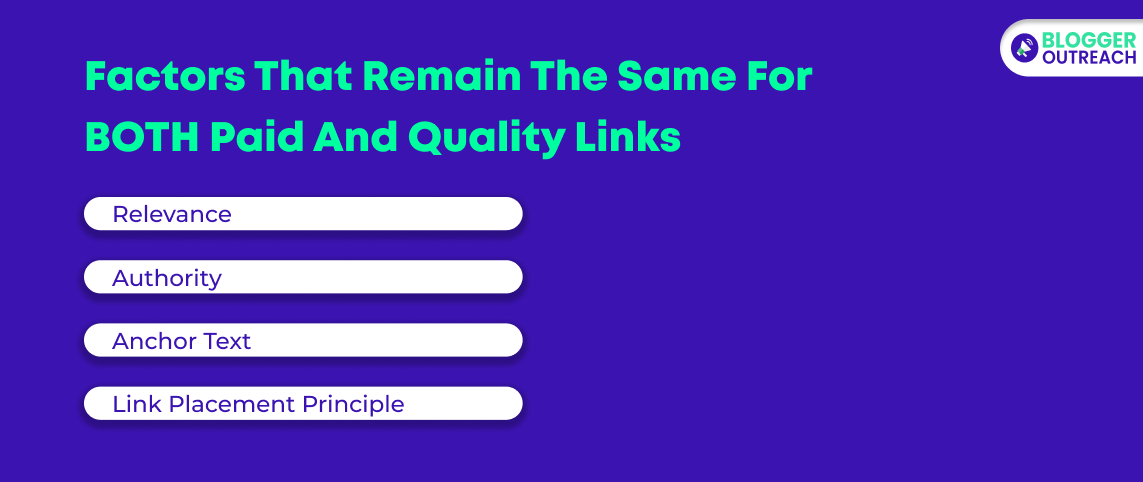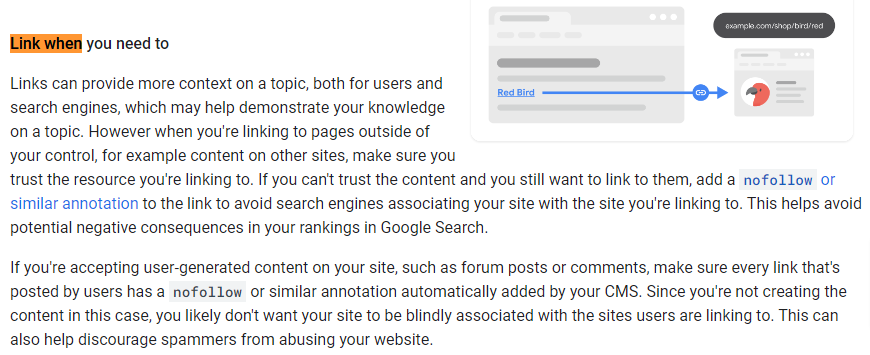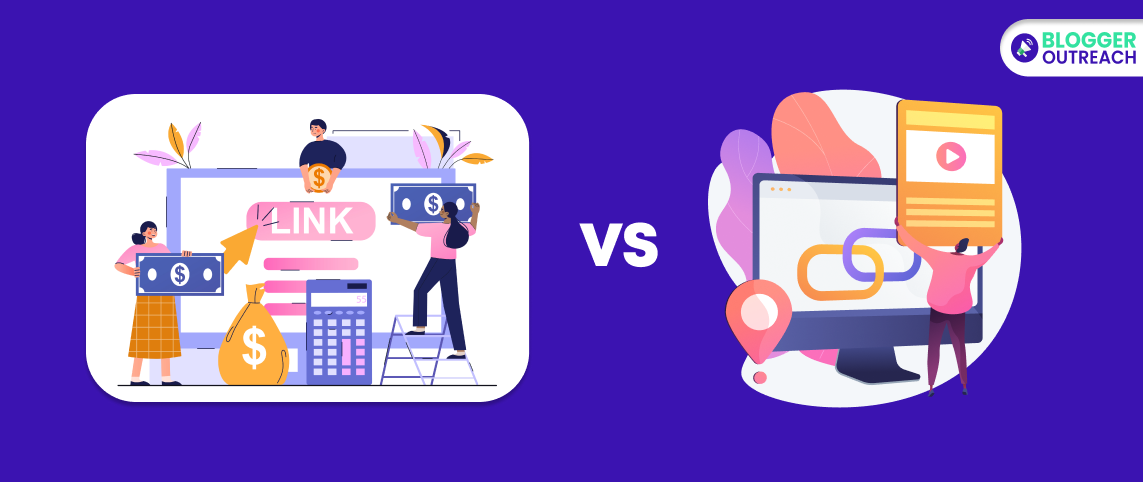Table Of Content
- 1 Paid Links vs Quality Links Examples
- 2 Factors That Remain The Same For BOTH Paid And Quality Links
- 3 Paid Links vs Quality Links Cost
- 4 ✅How Google Wants Your Links to Be?
- 5 ❌Google Hates These Links
- 6 With Bloggeroutreach, Paid Links Become Quality Links – Here Is HOW…
- 7 How To Choose Agencies While Buying Backlinks?
- 8 Paid Links And Quality Links – Over To You!
Paid links are links that you purchase, whereas quality links are earned links. However, the question is: is it possible to make paid links appear as earned links?
Yes, it is absolutely possible if you choose TRUSTED agencies like BloggerOutreach.
In fact, 63% of businesses believe paid links positively impact SEO.
And 58.3% of people spend $1000-5000 dollars per month on link building.

Source: SERPSTAT
In this article, we will teach you about paid and quality links. Additionally, we will share how to buy links in a lawful way so that Google perceives them as natural links.
So let’s begin…
Table of Contents
- Paid Links vs Quality Links Examples
- Factors That Remain Same for Paid Links and Quality Links
- Paid Link vs. Quality Link Cost
- How Google Wants Your Links to Be?
- Types of Links Google Does Not Want
- How to Make Paid Links Look Like Quality Links? (The BloggerOutreach Way)
- How do you choose agencies while buying backlinks?
Paid Links vs Quality Links Examples
Many of you wonder how paid and quality links work. Well, fear not. Let’s teach you with examples.
(i) Example Of Paid Links – The SEOBuddy Transaction
For instance, imagine an apparel brand eager to leap onto the first page of the search results. The goal? To boost online visibility and drive sales. With that aim, they seek help from SEOBuddy, an experienced SEO agency specializing in link building. Six months later, the metrics tell a story of considerable upward mobility, with online footfall translating into order digits—sounds promising, doesn’t it?
(ii) Example Of Quality Links – Linkable Asset
Picture yourself as a pro blogger with a well-researched masterpiece—’101 Ranking Factors for 2024.’ Your article is well-informed and adorned with infographics and insights. Soon, the industry starts linking back to you organically. This, in turn, transforms your page into a coveted resource.
Understood?
One story speaks of investment, the other patience and skill.
But to build links that Google loves, you have to consider certain aspects of link building.
Factors That Remain The Same For BOTH Paid And Quality Links

Despite the difference in their acquisition, the anatomy of paid and quality links share a fundamental trait.
Yes, they must adhere to a particular set of standards.
Certainly, you can call them the golden rules of link building.
(Because they demand your attention whether you’re purchasing placement or earning it.)
(i) Relevance
The relevance of a link to the page’s content can make or break its value. It’s about finding the seamless correlation between the host site’s niche and your own. Especially after the March Core Update, this has become an absolute necessity.
For example, if you have a parenting blog, don’t get links from a fishing blog.
So, the bottom line is not to build links to build it. Instead, make something meaningful to the users.
(ii) Authority
Did you know about Link Juice? Well, Link Juice is the authority that passes through a link. But how does one ensure they get higher link juice through their link building collaboration?
This is where you need to check certain metrics like Domain Authority (DA), Domain Rating (DR), and trust indicators like citation and trust flow.
Both paid and quality links shine when they stem from sites with palpable credibility and established digital footprints.
So, first thing first, before you reach out to any publisher for links, ensure that you check these metrics.
In spite of the fact that these are not official metrics, they help you to gauge the authority and credibility of the website.
(iii) Anchor Text
Anchor text is the clickable text of a hyperlink. But when it comes to ink building, it is more than that. Because it’s something that drives traffic, so, anchor text must seem like a natural appendage that enhances the overall content flow.
(iv) Link Placement Principle
Finally, the position of a link.
Steer clear of footer links or sidebar links.
Everything boils down to one goal: improving user experience. This is why you should aim for In-content links. Because they offer seamless integration and engagement.
Paid Links vs Quality Links Cost
Is it always money? Or there is something more to it?
If you talk about Quality Links, it isn’t always about dollars and cents. A broader currency at play involves time, effort, and a willingness to cultivate patience when nurturing quality backlinks.
Conversely, if we talk about Paid links, it can vary from $150 to 500 dollars on average, depending on the authority of the sites. However, in cases of very high authority websites (DA 85+), the cost can go up to $1000-$1200.
✅How Google Wants Your Links to Be?
Link relevance, trustworthy patterns, and the value they add to user experience—these qualifiers aren’t just arbitrary SEO finesse.
In fact, Google uses links to find your content.

So, when you get links over a period of time, it will boost your popularity.
Link When It Is Necessary
Google in its SEO Starter Guide 2024 mentioned “Link when you need to”

Basically, Google asked SEOs to link to trusted resources. However, if you are unsure about the credibility of the sources you are linking to, add a nofollow tag. As simple as it may sound.
But don’t just get into link building, just because everyone is doing it. Ultimately it boils down to one common goal: optimum user experience.
The Value-Added Imperative
Links are very important for web connectivity and Google rewards those which enhance the user’s online experience. Good links should always support and add to the content instead of interrupting it.
So, Google loves links that come naturally to you.
The Trust Proxy
When Google bots trail a link, they’re on the quest for quality and trustworthiness. A paid link irrelevant to your website’s content can harm your website’s ranking on search engines.
The Nofollow Nudge
If you’re unsure about a link’s safety or relevance, add a nofollow attribute. This will prevent search engines from associating your website with potentially harmful content. This can protect your website’s search engine ranking and reputation.
A nofollow attribute is like an invisibility cloak that shields your website from unwanted associations with questionable content. It’s important to use it when you are unsure about the veracity or context of a link.
❌Google Hates These Links
If you think you can fool Google, think again. Check out if you are building these links or not. If YES, then it’s time to stop it.
PBN links: Gone are the days when people used to create PBNs and interlink them. With the advent of Panda and Penguin, Google has ended these practices. So, I do not think that Google can recognize these practices.
Link exchange without a goal: Google stated practices like – “you link to me, I link to you.” STOP if you are indulged in such practices.
Automatic Link Building Programs or Link Schemes: Some tools build links for you. But what is the purpose? Link building is a subjective process that depends on you, your niche, and your authority. This is why it can not be an automated process.
Directory submission: Submitting your site to the directory to get links is NOT something that Google vouchs for. Because they don’t add much value to this online world, thus, the link juice it carry comes with negligible link juice.
Spam Comments: Blog Commenting is not a bad strategy if done correctly. However, most people spam blog comments expecting to get people redirected to their websites. And this is where the problem lies. Google considers it as spam.
With Bloggeroutreach, Paid Links Become Quality Links – Here Is HOW…
Remember, in the introduction, we promised to teach you the legitimate way to buy links. To be precise – how do you buy links that look natural?
At BloggerOutreach, we ensure that the links you get look natural and organic by:
Creating linkable assets: Our in-house content team creates data-driven articles, how-to guides, listicles, and expert roundups that generate links for our clients.
Building relationships with 50,000+ publishers across different niches: With the help of our relationship management team and their years of effort – we have created a database of 50,000+ bloggers. This vast database helps us to choose the most relevant websites for our clients. As you know, relevance is the key to link building.
Writing Guest Posts that Fill Content Gaps: Yes, all the guest posts we write for our clients are value bombs. Our mindset is clear: Create original content so our clients get natural and permanent links.
Organic Link Insertions that look like content modifications: This is unique because not many people know this. Most people do link insertions the wrong way. They place their links within the content without considering user experience. However, we take it as a content improvement task. Specifically, we evaluate the existing content and add helpful information there. It may be a paragraph or so. And within that modified content, we place the anchor text naturally (without disrupting the flow of the content). Result? It works wonders by creating a win-win situation: the publisher gets improved content, and the advertiser gets a natural link.
Harnessing the power of Brand mentions: For example, let’s say we have created a linkable asset for our clients. Now, we will look for linking opportunities where people refer to us without mentioning our link.
Once we found those brand-mentioning opportunities, we contacted the website owner in return for a link.
How To Choose Agencies While Buying Backlinks?
Quality should never be compromised when purchasing backlinks. Here’s a roadmap to guide your choice:
(i) Seek Knowledge And Expertise, Not Bargains
The agency’s expertise and SEO knowledge should be your foremost consideration. Steer clear of link sellers offering a ‘too good to be true’ deal; it’s likely just that.
(ii) A Portfolio Worth Its Links
A reputable agency’s portfolio is a testament to its success. Look for evidence of quality over quantity, with a history of link building success stories.
Now you might be wondering about what a popular agency’s portfolio looks like.
An agency’s portfolio looks like this: Case Studies
(iii) Turnaround Timing Is Extremely Important
Timeliness is a virtue, but haste in link procurement is a red flag. Discuss the agency’s timeline to understand their process better.
Interestingly, the turnaround time signals professionalism. And it’s a common trait of all the top agencies.
(iv) Transparency Is The Best Policy
An open conversation with potential link vendors can shed light on their practices. Discussing their process, including outreach and content development, provides insights into their ethical link-building approach.
Paid Links And Quality Links – Over To You!
We hope that, by now, you understand that paid links can also be of high quality if you have a team of experts at your disposal.
So, educate yourself and make an informed choice.
And if you are looking for such agencies, we invite you to a FREE Strategy Call. During this call, our link building expert will hear you, try to understand your situation, and then map out a step-by-step plan.
Book your Free Strategy Call Today.
Read Also:








